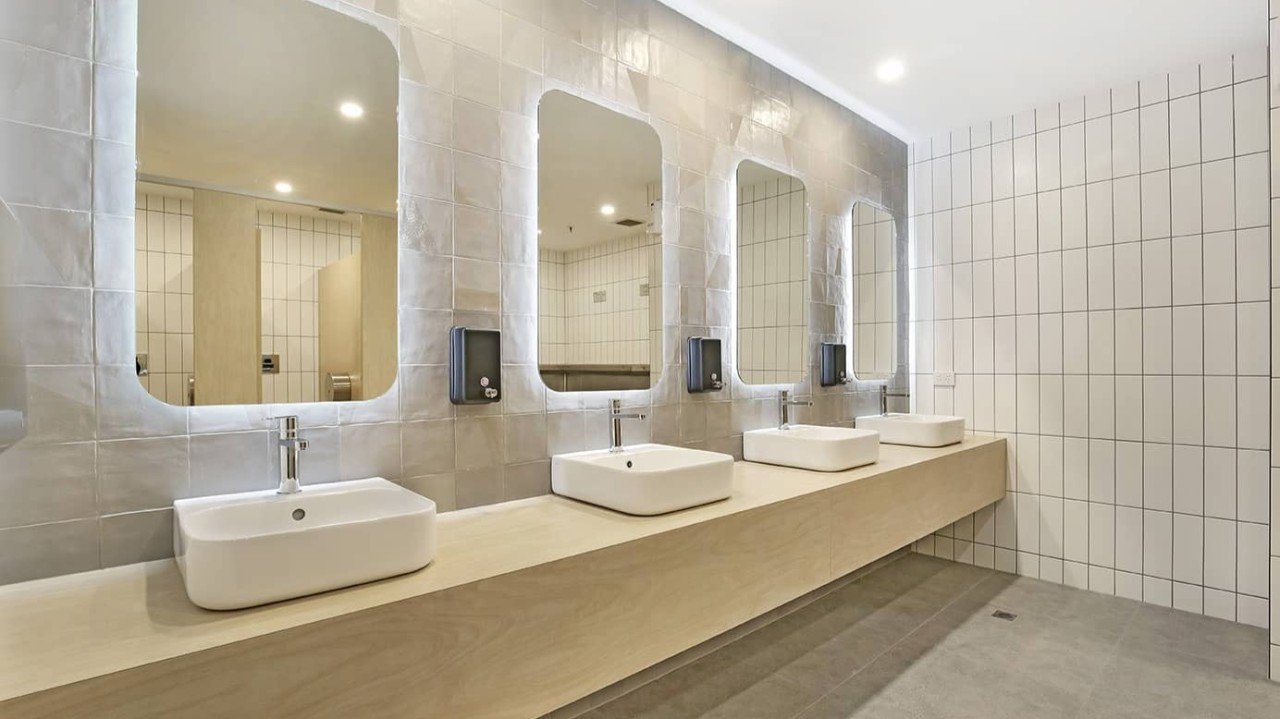Washroom Tap
are not just functional fixtures; they are pivotal elements in a space's overall aesthetic and usability. The perfect tap combines elegant design with superior functionality, enhancing the washroom's visual appeal and user experience. This guide explores how to strike the perfect balance between aesthetics and utility in selecting the ideal washroom tap.
The design of a washroom tap significantly impacts the overall look of the space. Modern design trends prioritize sleek lines, minimalism, and finishes that complement the overall colour palette of the washroom.
- Material Choices: The most popular materials include stainless steel for its durability and sleek appearance, brass for a traditional feel, and matte black for a bold, contemporary look. Custom finishes such as brushed brass or rose gold are increasingly popular for those seeking a unique touch.
- Finishes: Chrome remains a classic choice for its reflective qualities and ease of cleaning. Brushed nickel offers a more subdued, fingerprint-resistant surface, while gold and brass finishes add warmth and luxury.
- Design Styles: Taps must complement the washroom’s overall design theme. Modern taps feature clean lines and simple forms, while traditional taps may include ornate detailing and vintage finishes. Minimalist taps often have a geometric design with single-handle or touchless operation for a streamlined appearance.
Utility and Functionality
While aesthetics are important, the utility of a tap cannot be overlooked. The functionality includes how easy the tap is to use, how well it controls water flow and temperature, and how it contributes to the overall experience of the washroom.
- Types of Taps: Single-handle taps allow users to control both water temperature and flow with one lever, making them a great choice for minimalistic designs. Double-handle Washroom Faucet
offer separate controls for hot and cold water, which can be a good match for traditional or more elaborate design schemes. Sensor-based taps reduce contact, enhancing hygiene and water efficiency. Wall-mounted taps free up countertop space, offering a clean and modern look.
- Water-Saving Features: Modern taps often include aerators or flow restrictors to minimize water use without sacrificing performance. Look for taps with low flow rates that maintain strong water pressure.
- Ease of Use: The ergonomics of lever designs can significantly impact user experience. For public or family washrooms, sensor taps can be particularly beneficial, providing touchless operation that enhances hygiene.
Innovative Technologies in Modern Taps
Technology has transformed the humble tap into a high-tech marvel. Sensor taps, temperature control systems, and even smart taps that integrate with home automation systems are now available.
- Touchless and Sensor Taps: These taps use infrared or capacitive sensors to detect hand movement, offering a no-touch experience that minimizes the spread of germs.
- Temperature Control Features: Some advanced taps come with preset temperature settings or digital displays, allowing users to choose their preferred water temperature easily.
- Smart Taps: Integration with smart home systems allows users to control water flow and temperature through voice commands or mobile apps. These taps can also track water usage, offering insights into conservation efforts.
- Hygienic Benefits: Touchless taps not only improve convenience but also contribute to a more sanitary environment, making them ideal for public and high-traffic washrooms.
Environmental Impact and Sustainability
With growing environmental awareness, eco-friendly taps are more in demand. Look for Washroom Tap
made from recyclable materials or those manufactured with reduced carbon footprints.
- Water-Saving Technologies: Taps with aerators or flow restrictors can significantly reduce water usage, contributing to overall sustainability in the washroom.
- Certifications: When choosing taps, consider those with certifications like WaterSense or LEED, which indicate that the product meets specific environmental performance criteria.
Maintenance and Care Tips
Proper maintenance is crucial to keep washroom taps functioning optimally and looking great.
- Regular Cleaning Routines: Use non-abrasive cleaners and a soft cloth to keep taps shining. Avoid harsh chemicals that can damage the finish.
- Preventing Limescale and Corrosion: Regular descaling can prevent buildup, especially in hard water areas. Consider using vinegar or specialized cleaners to tackle limescale.
- Common Issues and DIY Fixes: Drips, leaks, or reduced water flow are common tap issues. Many can be resolved with simple fixes like replacing worn-out washers or cleaning aerators.
Choosing the Right Tap for Your Space
Selecting the right tap involves considering the overall style, size of the space, and how it will be used.
- Matching with Sinks and Countertops: Ensure the tap size and style complement the sink. For instance, a tall tap pair well with a vessel sink, while a low-profile tap is suited to under-mount or integrated sink designs.
- Small vs. Large Washrooms: In compact spaces, wall-mounted or single-handle taps can save valuable counter space. Larger washrooms offer the opportunity to make a statement with bolder tap designs.
- Budget Considerations: While high-end taps can offer advanced features and unique designs, there are plenty of stylish, functional options at more affordable price points.
The perfect Washroom Faucet
is a blend of aesthetics and utility, enhancing both the look and functionality of the space. By carefully considering design, technology, and sustainability, homeowners and designers can select taps that not only meet their needs but also elevate the overall washroom experience.
